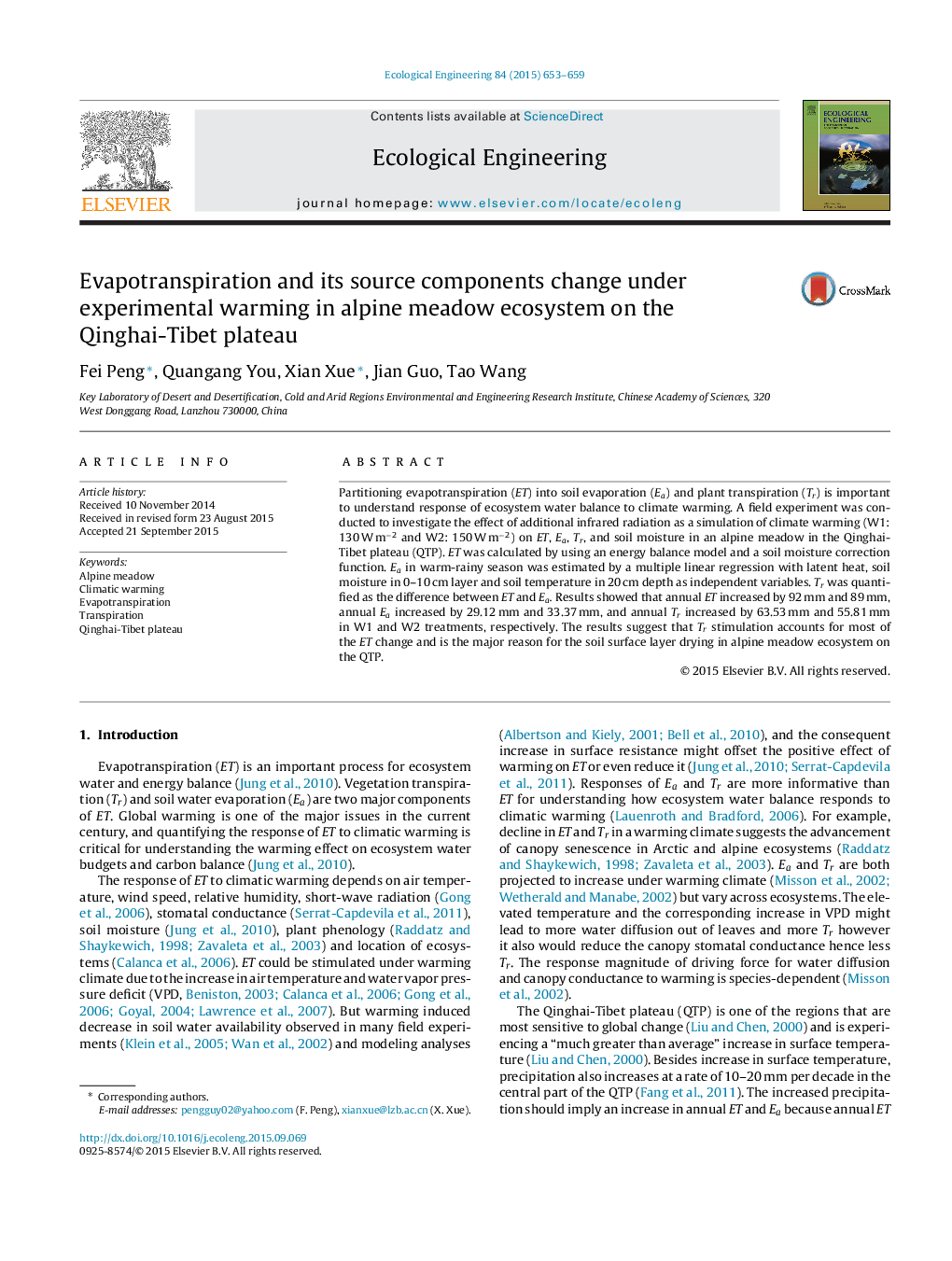| Article ID | Journal | Published Year | Pages | File Type |
|---|---|---|---|---|
| 4388836 | Ecological Engineering | 2015 | 7 Pages |
•Warming increased annual ET, Tr and Ea.•Tr increase accounts for most of ET stimulation under warming.•Tr increase is the major reason for soil surface layer drying.
Partitioning evapotranspiration (ET) into soil evaporation (Ea) and plant transpiration (Tr) is important to understand response of ecosystem water balance to climate warming. A field experiment was conducted to investigate the effect of additional infrared radiation as a simulation of climate warming (W1: 130 W m−2 and W2: 150 W m−2) on ET, Ea, Tr, and soil moisture in an alpine meadow in the Qinghai-Tibet plateau (QTP). ET was calculated by using an energy balance model and a soil moisture correction function. Ea in warm-rainy season was estimated by a multiple linear regression with latent heat, soil moisture in 0–10 cm layer and soil temperature in 20 cm depth as independent variables. Tr was quantified as the difference between ET and Ea. Results showed that annual ET increased by 92 mm and 89 mm, annual Ea increased by 29.12 mm and 33.37 mm, and annual Tr increased by 63.53 mm and 55.81 mm in W1 and W2 treatments, respectively. The results suggest that Tr stimulation accounts for most of the ET change and is the major reason for the soil surface layer drying in alpine meadow ecosystem on the QTP.
